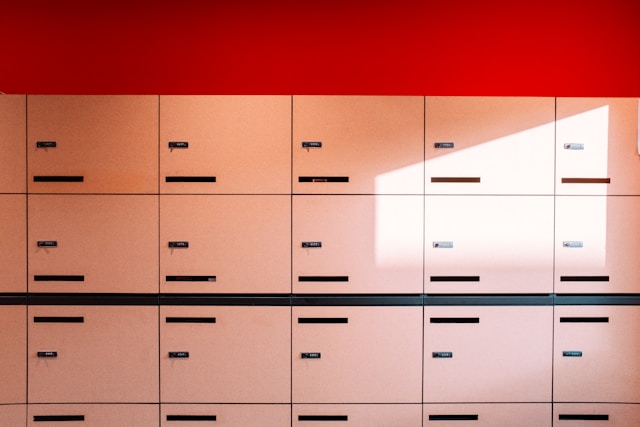Choosing a locker system for your office isn’t just a matter of storage – it’s a financial decision that impacts both your short-term budget and long-term operations. Whether you’re setting up a new workspace or upgrading an existing one, your investment needs to align with your organizational goals, employee needs, and budget constraints. A smart locker system can increase efficiency, save space, and even reduce administrative workload, but making the wrong choice could lead to unexpected costs and functionality issues. To avoid that, it’s important to understand the full financial picture – upfront costs, long-term value, and hidden expenses – before making your decision.

Upfront Costs: What You Pay Initially
This includes the price of the lockers themselves, shipping, taxes, and installation. Basic metal lockers can be inexpensive, but if you’re thinking about more advanced options, like smart lockers with integrated tech features, the initial price tag rises significantly. Don’t forget to factor in customizations like color, branding, or specialty materials. Basic models may seem cost-effective at first glance, but if you’re leaning toward tech-enabled workplace locker solutions, you should be prepared for a higher initial investment due to integrated features and smart functionalities. Before you buy, request a full quote that breaks down every component of the cost.
Cost of Integration With Existing Systems
You may need to integrate your locker system with your current office infrastructure, including security systems, employee ID badges, or internal software platforms. If you’re opting for a digital or smart locker system, this step becomes even more critical – and costly. Integration may require additional hardware (like access control readers or network cabling), software licenses, or even developer support. Some systems work right out of the box, while others might demand customization that isn’t included in the base price. Make sure you understand what’s required for your chosen system to function properly within your environment and what that will cost in both time and money.
Maintenance and Operational Expenses
You’ll need to handle wear and tear, repairs, and possibly even replacements. Mechanical lockers might require minimal maintenance, but they lack the tracking and control benefits of smart systems. Electronic or smart lockers may need regular software updates, technical support, or replacement parts that aren’t cheap. If you’re leasing a system or have a service contract, make sure you understand the terms – some contracts include maintenance while others charge separately. Operational expenses also include electricity for powered systems and training time for staff to use them efficiently.
Space Efficiency and Real Estate Value
The design and layout of your lockers can affect how efficiently you use that space. Choosing compact or modular systems could allow you to fit more lockers into a smaller area, which is a direct financial benefit if you’re working in a high-rent location. Oversized or poorly planned systems can waste square footage that could be used more productively. Some advanced locker systems even offer dynamic storage, where lockers are assigned on demand rather than permanently, saving even more room. When space is money, choosing a system that maximizes your real estate value is a smart financial move.
Employee Productivity and Workflow Impact
A poorly designed system can waste time and cause frustration, while an efficient one supports smooth daily routines. For instance, if employees spend five extra minutes each day accessing their lockers, multiply that across dozens or hundreds of staff members, and you’ll see how quickly lost time becomes a financial issue. A well-integrated locker system – even one that automates assignments or tracks usage – can streamline operations and reduce distractions. Investing in ease-of-use features can result in measurable productivity gains, which saves your business money.
Scalability and Long-Term Value
A locker system is a long-term investment, and it needs to grow with your business. Think about how easily you can scale your current choice – can it accommodate more employees or different departments down the line without requiring a total overhaul? Systems that allow for modular additions or software upgrades often prove more cost-effective in the long run. It’s also important to think about resale value or reusability if your office layout changes. Avoid one-size-fits-all systems that lock you into a rigid structure. Instead, choose a solution that can evolve without forcing you to start from scratch, reducing long-term financial risk.
Every office needs a locker system that fits both its space and its budget. But picking the right one isn’t only about comparing price tags. It’s about looking at the total cost of ownership – from installation and integration to long-term scalability and operational impact. Take time to think about not just what you need today, but how your business might change tomorrow. Think about how your choice will affect employee productivity, space usage, and maintenance needs. When you do the math across all these factors, the smartest locker system isn’t always the cheapest – it’s the one that delivers the most value over time.



Leave a Reply